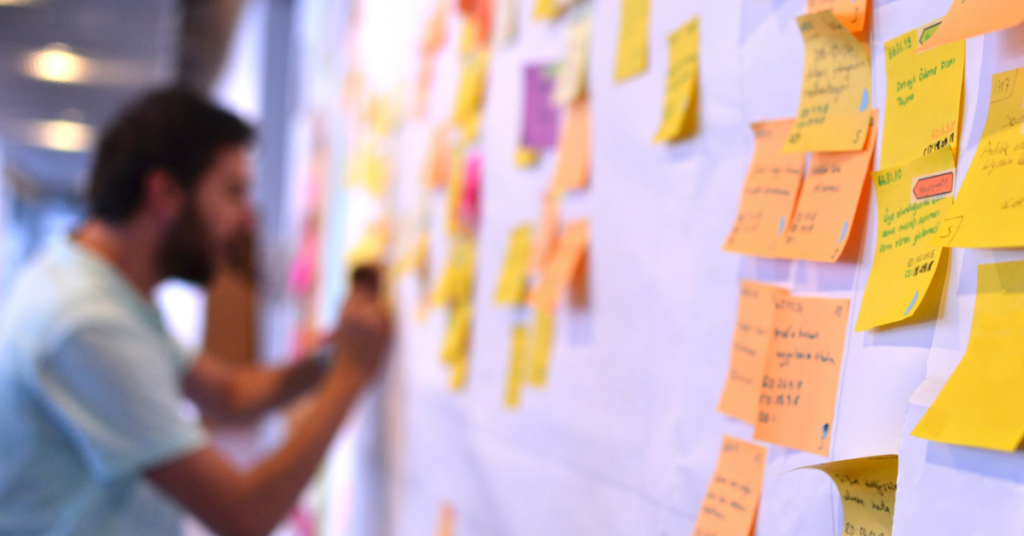Decoding Agile vs Waterfall: Choosing the Right Project Management Methodology

- What is the Difference Between Agile vs Waterfall Project Management Methods?
- How do Agile and Waterfall Approaches Impact Project Timelines and Deliverables?
- What are the Pros and Cons of Agile and Waterfall Methodologies?
- Which Methodology is Better Suited for Small Projects With Fast-Changing Requirements?
- What Factors Should be Considered When Choosing Between Agile and Waterfall for a Project?
The choice between Agile vs Waterfall methodologies is a pivotal decision for project success. Both methodologies offer distinct approaches to managing projects, each with unique strengths and challenges. Agile, known for its flexibility and iterative nature, contrasts sharply with the structured, sequential approach of Waterfall. Making the right choice that aligns perfectly with your project’s needs is crucial for achieving the desired outcomes. This blog aims to dissect the Agile vs Waterfall debate, providing insights into their differences, impacts on project timelines and deliverables, and their respective pros and cons.
What is the Difference Between Agile vs Waterfall Project Management Methods?
Agile Project Management
Agile project management stands out as a flexible, iterative approach. It prioritizes collaboration, customer feedback, and frequent, small releases, ensuring adaptability to changing project requirements. Furthermore, Agile fosters a dynamic environment where teams can quickly respond to feedback. Thus, it is ideal for projects where client involvement and evolving requirements are prevalent.
Waterfall Project Management
Conversely, Waterfall project management adopts a linear and sequential approach. For instance, each phase, such as conception, initiation, analysis, design, construction, testing, deployment, and maintenance, must be completed before the next step begins. Hence, this method is often chosen for projects with well-defined, unchanging requirements. For example, in construction or manufacturing projects, where changes can be costly and disruptive, Waterfall’s structured approach is beneficial. Additionally, it provides a clear roadmap, making it easier for teams to follow a defined path.
ALSO READ: 5 Lean Principles to Boost Project Efficiency and Productivity
How do Agile and Waterfall Approaches Impact Project Timelines and Deliverables?

Agile Approach
Impact of Agile on Project Timeline
Agile methodologies actively shorten the timeline for releasing a project’s initial version because its iterative nature, involving teams working in short sprints, drives this acceleration. Thus, its impact on project timelines is profound, offering a dynamic and responsive development process.
Impact of Agile on Project Deliverables
Agile prioritizes incremental progress in project deliverables. Each sprint produces a tangible, albeit small, outcome, ensuring continuous evolution and improvement of deliverables. Agile’s adaptability allows for quick alterations in deliverables to meet changing needs or feedback. The benefits of Agile shine through in this ability to produce relevant and up-to-date deliverables throughout the project lifecycle.
Waterfall Approach
Impact of Waterfall on Project Timeline
Waterfall project management provides a predictable and structured timeline. The project team maps out each phase from the start, setting clear milestones and deadlines. In turn, this predictability allows for precise planning and resource allocation. However, the rigidity of Waterfall leaves little room for adapting to unforeseen changes or new requirements.
Impact of Waterfall on Project Deliverables
Waterfall’s structured approach ensures specific, well-defined outcomes in each project phase. This clarity benefits projects with minimal changes and known upfront requirements. The downside is that implementing changes or feedback is only possible in subsequent phases, potentially causing delays or increased costs.
ALSO READ: Agile vs Scrum: Which is the Best Approach for Successful Project Execution?
What are the Pros and Cons of Agile and Waterfall Methodologies?
A. Pros of Agile
- Increased Flexibility: Agile adapts quickly to changes, thus making it ideal for dynamic project environments
- Faster Turnaround Times: Its iterative cycles lead to quicker deliveries, enhancing project momentum
- Continuous Improvement: Agile facilitates ongoing refinement of project deliverables through regular feedback
- Enhanced Customer Satisfaction: This methodology involves clients in the development process, ensuring their needs are met
- Improved Team Productivity: Its collaborative nature boosts team morale and efficiency
B. Cons of Agile
- Potential for Scope Creep: The flexibility of this approach can sometimes lead to continuous changes, expanding the project scope.
- Higher Costs: The flipside of Agile’s iterative nature is that it might increase the overall project cost due to ongoing work.
- Unpredictable Project Timelines: The method’s adaptability can lead to uncertainty in project completion dates.
- Requires Active Client Involvement: Agile demands continuous client engagement, which can be challenging.
- Dependent on Team Dynamics: Agile’s success heavily relies on effective team collaboration and communication.
C. Pros of Waterfall
- Clear and Structured Plan: Waterfall’s linear approach provides a straightforward project roadmap.
- Set Timelines and Deliverables: This method has a phased structure, which makes planning and resource allocation easier.
- Ideal for Well-Defined Projects: Waterfall suits projects with fixed requirements and minimal changes.
- Ease of Management: Its sequential nature simplifies project monitoring and control.
- Well Suited for Regulatory Documentation: Additionally, its documentation-heavy approach is beneficial for compliance.
D. Cons of Waterfall
- Lacks Flexibility: Waterfall struggles to accommodate changes once the project is underway.
- Less Responsive to Client/Market Changes: The methodology’s rigid structure can hinder adaptation to new insights.
- Risk of Late-Stage Testing Delays: Discovering issues in the testing phase can lead to significant delays.
- Higher Costs for Changes: Making alterations late in the project can be costly in Waterfall.
- Limited Client Involvement: Clients typically see the end product only, thus limiting their input during the process.
Choosing a project management methodology between Agile vs Waterfall depends on specific project needs. Since the benefits of Waterfall and Agile vary, understanding these pros and cons is crucial for informed decision-making.
ALSO READ: Why You Aren’t Among the Top 1% Project Managers in Your Industry
Which Methodology is Better Suited for Small Projects With Fast-Changing Requirements?
When evaluating Agile vs Waterfall in the context of risk management, it is crucial to consider how each methodology addresses potential risks. On the one hand, Agile project management stands out for its capacity to identify and mitigate risks early on. This advantage stems from its iterative nature, allowing frequent reassessments and adjustments. According to the 17th State of Agile Report, nearly half of the companies using Agile (49%) reported a significant risk reduction. This was mainly due to the approach’s agility in responding to evolving customer needs and market shifts.
Additionally, Agile’s focus on delivering small, workable segments of the project allows for continuous progress and easy incorporation of changes. This approach contrasts with Waterfall project management, which, due to its linear and sequential nature, can struggle with rapid shifts in project scope or direction. Therefore, in the context of choosing project management methodology, Agile stands out for small, dynamic projects.
What Factors Should be Considered When Choosing Between Agile and Waterfall for a Project?
Project Complexity and Size
When debating Agile vs Waterfall, first assess the project’s complexity and size. For instance, Agile excels in managing complex projects that demand flexibility and frequent adjustments. Conversely, Waterfall is more suited for simpler, well-defined projects where requirements are unlikely to change. This distinction highlights the benefits of Agile in handling multifaceted tasks, whereas the benefits of Waterfall shine in more straightforward scenarios.
Customer Involvement
Next, consider the level of customer involvement while debating Agile vs Waterfall. Agile project management thrives on active client participation, requiring their feedback for continuous iterations. Hence, if client engagement is limited or not feasible, the Waterfall project management approach might be the preferable option. In essence, this factor is crucial in choosing a project management methodology, as the success of Agile heavily relies on client collaboration.
Team Experience
Evaluating your team’s familiarity with either methodology is also vital. Those experienced in Agile may find the structured environment of Waterfall challenging. Similarly, teams accustomed to Waterfall might struggle with the fluidity of Agile. Therefore, aligning the methodology with the team’s expertise is essential for project success.
Risk Management
Consider how each methodology handles risk. Thanks to its iterative nature, Agile allows for early risk identification and mitigation. In contrast, Waterfall’s later-stage testing could pose higher risks if issues are discovered late in the project. Hence, this factor is a significant aspect of choosing the correct methodology, especially in projects where risk management is a top priority.
ALSO READ: The Top 9 Rules of Project Management Every Project Manager Must Know
It is clear, therefore, that deciding between Agile vs Waterfall methodologies is about aligning your project management approach with your project’s specific needs and dynamics. Hence, if you are looking to gain in-depth knowledge of project methodologies that best fit your purpose, consider enrolling in Emeritus’ project management courses and unlock your path to success.
Write to us at content@emeritus.org






